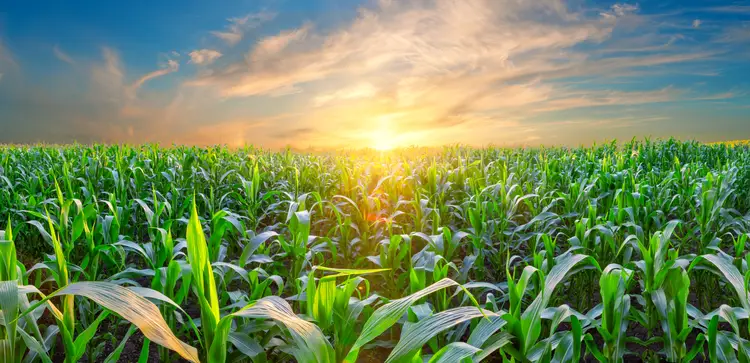We’ve said it before and we’ll say it again: agriculture is the investment of the century. If you can find the right deals, agricultural investments can provide you with years of reliable cash flow that’s 100% turn-key.
If agriculture isn’t currently in your overseas property investment portfolio, here are seven reasons why you should add it this year.
-
It Can Bring Portfolio Diversification
When property investors lose everything, it’s usually the result of too much leverage and not enough diversification—investing in just one market or in only one type of property.
The housing market crash made this painfully clear to many property investors back in 2008. After the crisis, savvy investors turned their attention to the farmland market, which is generally less volatile. It held strong during the crash because its value is independent of real estate market trends.
Adding an agricultural investment to your portfolio can bring diversification of asset class and market, providing a buffer against any economic downturns that might be on the horizon.
-
Agricultural Land Will Always Hold Value
Productive land is an opportunity to produce something of marketable value. Unlike a lot in a development community, productive land always retains the potential for yield. When whatever you plant reaches maturity, you have a highly in-demand product to sell.
Plus, the world is always going to need the things we grow on agricultural land—cash crops, fruit trees, grapevines, timber, and so on… In fact, it’s only going to need more and more of them, and quickly.
-
Demand Is Growing And Supply Is Shrinking
The world’s population is growing exponentially, expected to rise to almost 10 billion by 2050. This increases the demand for agricultural products.
Meanwhile, our supply of arable land is limited. It’s actually shrinking because of erosion and pollution. We’ve lost a third of its arable land in the past 50 years alone.
You know the old real estatcome investment adage that remends buying beachfront because they’re not making any more of it? The same goes for productive land.
The limited supply and fast-growing demand make farmland a strong store of value long-term.
-
It Can Provide Steady Income
To earn cash flow from crops, you don’t need to roll up your sleeves and pick up a hoe. Here are the three most common forms a passive cash-flow investment in agriculture can take:
- Buy farmland and rent it out to a farmer or hire a farm management company to produce crops. The former requires a significant investment to achieve a worthwhile return. The latter can be a profitable option. Farm management is a sophisticated industry, with turn-key options in certain markets.
- Buy shares or units in an agricultural investment company. This can take different forms, but the one we prefer allows the investor to hold title to the land being farmed and then contract with an in-place farm management company to take care of operations. The farm manager cares for multiple individual properties, and each owner receives the revenue from the production of their property.
- Buy trees—not for harvest but for timber. Timber has enjoyed some of the best risk-reward ratios of any investment sector. It has produced an annualized ROI of as much as 15% per year since they started keeping records of investment risk versus return. It’s a low-volatility hedge against inflation, an asset class that operates independent of the stock market, and a long-held secret of the world’s wealthiest people. Plus, timber doesn’t have to be harvested at any particular time. You can leave your trees in the ground until wood prices reach a level that you like.
5. It Can Be A Legacy For Your Heirs
One drawback to investing in timber specifically is the investment term. Unlike cash crops, which can mature in less than a year, you may have to wait 10 to 25 years before you see any real return.
Eucalyptus matures in about 13 years; pine in 15 to 20. Teak can take up to 25 years to be ready for harvest. Thinnings are often done throughout the growth cycle but bring in limited cash flow.
Timber can be a good legacy investment—one you make as much for your kids and grandkids as you do for yourself. This can help protect your heirs and potentially open their futures up in unimaginable ways.
-
An Agricultural Investment Can Act As A Hedge Against Inflation
We’ve all seen the cost of food and commodities go up in recent years… Revenues from agricultural products tend to rise as inflation drives up the cost of food. The demand for food will always be there, ensuring consistent revenue. The value of farmland also tends to go up over time.
All of this provides an excellent hedge against inflation and helps preserve your investment’s purchasing power over time.
Agricultural investments, of course, also come with risks, like unexpected environmental factors and market volatility.
-
It Can Bring Tax And Residency Perks
Certain countries like Panama, Colombia, and Argentina offer tax incentives for agricultural and forestry investments, such as reduced property taxes or exemptions on farming income. This can enhance the overall profitability of an agriculture investment.
Some countries even offer residency in exchange for agricultural investments, treating them much the same as golden visa programs.
Panama, for example, is pro-investor and keen to promote forestry. It offers investors two-year temporary residence permits in exchange for $100,000 investments in teak reforestation. With a $350,000 investment, you can gain immediate permanent residence in Panama.
Panama is a top choice for investing in teak. It’s one of few places in the world where you can grow premium teak trees and is home to a number of managed plantations.
3 Agri-Investment Opportunities You Act On Today
-
Teak Investment In Panama
This teak investment in Panama is available through our contacts on the ground—experienced and established developers in the timber industry. It’s an opportunity to own one-fourth of an acre of teak in one of Panama’s top timber plantations.
Entry is easy with a low $6,880 investment offer, and it’s completely turn-key. Everything from the land and trees to the harvest and sale is managed and organized for you by the plantation owner.
Projected earnings of over $105,000 are on the table, and an investment can also be a path to Panamanian residency.
-
Truffle Investment In Spain
One of our most popular agri-investment deals to date involves a highly coveted luxury food item: truffles.
This is another high-demand-meets-low-supply investment story. In short, global demand for truffles has skyrocketed, but they’re difficult to produce. They only grow under specific circumstances in specific areas of the world… which is why we were excited to discover a truffle plantation in Spain that is backed by serious science.
Lief Simon has negotiated a deal that allows a limited number of investors to get involved in this project and enjoy above-average profits.
-
Almond Farmland In Spain
Also located in Spain, where the climate and soil are ideal, this opportunity targets the booming global demand for almonds. Plant-based health foods have never been more popular, and almonds and their by-products (milks, butters, oils, etc.) are often at the forefront of this.
The developer behind this almond farmland opportunity has implemented innovative farming techniques that allow them to generate “2.5 times higher returns” than traditional almond farms.
Trees are planted, harvests have been collected, and produce has been sold… and early investors have already received their pay-outs.
To smooth travels and successful property buys,
Sophia Titley
Editor, Overseas Property Alertt


